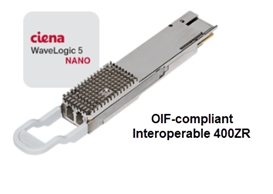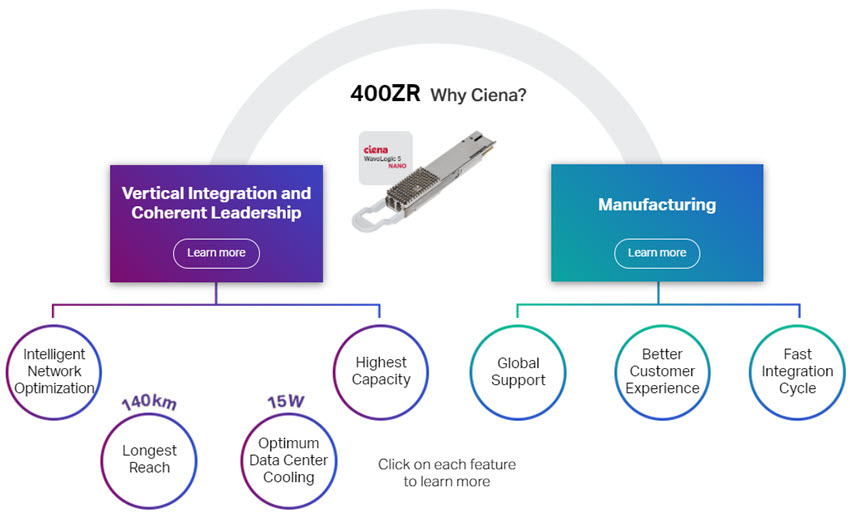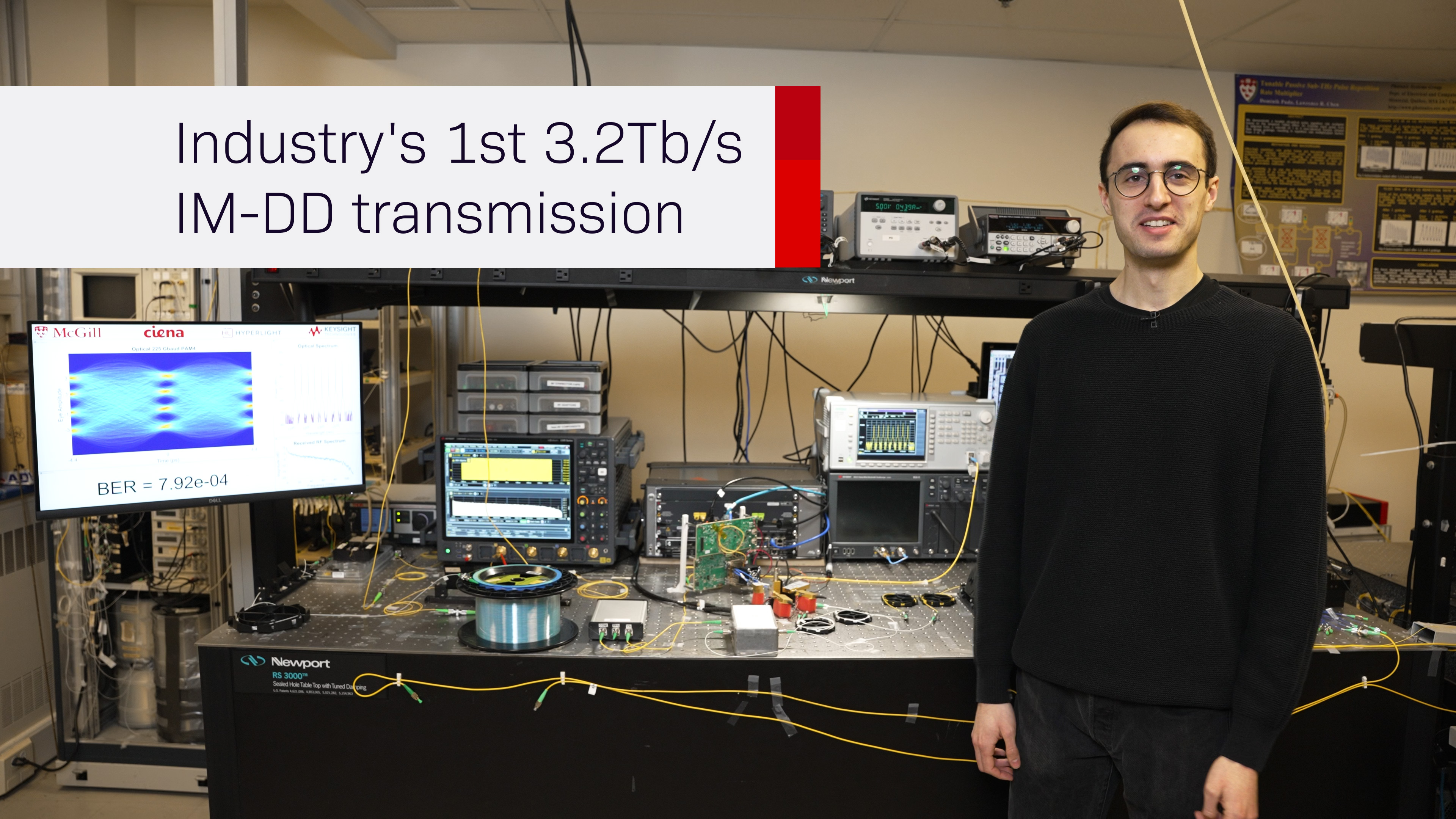Helping the planet and driving better economics, one 400ZR plug at a time
What would it mean to your business if you could save up to 2W per 400ZR plug? It’s an important question. Because at first glance, you might say to yourself – 2W doesn’t seem like that much. But upon further examination, those 2W could have incredible implications on both data center economics and corporate sustainability goals. But let’s start at the beginning…
What is 400ZR?
At the recent Optical Fiber Conference (OFC), Google stated that its data center traffic increased 235x over the past ten years. Facebook shared that its network traffic increased 75% in the past year alone. And, Microsoft commented that traffic between its metro data centers is now surpassing 6 petabits/s. That’s 6,000,000 gigabits/s between two data center buildings in a metropolitan area!
Global cloud and content providers rely on data centers to provide storage, compute and network connectivity to support this growing network traffic. Their innovative services specifically rely on “compute” and “store” with the role of the network being critical to providing transparent, always-on connectivity. In recent years, it is the networking function that is consuming an increasing portion of the data center power budget.
The rallying cry to solve this problem was made loud and clear by our global cloud and content provider customers: deliver a simple to deploy product that offers high bandwidth connectivity over ~80-100km using less power. Thus, the 400ZR Implementation Agreement at the Optical Internetworking Forum (OIF) was born.
Taking the form of a pluggable device, 400ZR coherent optics are designed to use as little power as possible. They provide 400 Gb/s wavelength data transmission in an ultra-compact form factor that can be deployed directly on data center switches to cut back on equipment footprint and energy consumption.
The rallying cry to solve this problem was made loud and clear by our global cloud and content provider customers: deliver a simple to deploy product that offers high bandwidth connectivity over ~80-100km using less power.
The Impact of 2W
We now have a new technology that drives better interoperability and scale for cloud connectivity in data centers. To get a better sense of that scale, when a cloud operator purchases 400ZR for one metro data center region, they are not ordering a few hundred of them – but tens of thousands at a time.
It’s early days for 400ZR and deployment of these plugs is just beginning, but through early testing we’re rapidly discovering an important fact: Not all plugs are the same and this could have incredibly important implications.
Not all plugs are the same and this could have incredibly important implications.
Achieving high-bandwidth coherent optical connectivity at a fraction of the footprint and power is only possible with leading technology innovation and engineering talent. Very few companies can offer the specific competencies needed in this area: coherent digital signal processing using advanced 7nm CMOS, miniaturization of electro-optics through silicon photonics integration, advanced packaging techniques and optical networking expertise.
So, it should come as no surprise that individual 400ZR design implementations can vary widely, with some offering significant networking advantages over others. As the leader in delivering innovative coherent networking tech, and a recognized leading vendor in DCI networks globally, what is Ciena offering with 400ZR?
 The typical power consumption of Ciena’s WaveLogic 5 Nano 400ZR is 15W per device, which amounts to industry-leading low power dissipation, among other networking benefits.
The typical power consumption of Ciena’s WaveLogic 5 Nano 400ZR is 15W per device, which amounts to industry-leading low power dissipation, among other networking benefits.
So back to my original question: How important would it be if you could achieve 2W savings per 400ZR plug?
With 20,000 400ZRs deployed in a single facility, the energy savings directly associated with these networking devices, as well as the related cooling equipment, results in >50kW power savings – for each data center. This translates to material energy gains across the distributed network. Just think, if you have 20 data centers, we’re talking about >1MW of power savings.
Over a year, this would equal CO2 emissions from:
Source: U.S. Environmental Protection Agency
Sustainability and Reducing Power Costs
Ask yourself, what might that mean for supporting your sustainability goals and for reducing costs?
It’s no secret that the cloud and data centers use an inordinate amount of electricity to power business and personal applications. Google, Amazon, Facebook, Oracle, and many others have aggressively stated public goals on reducing data center and cloud power consumption.
So, beyond the obvious advantages of what less power means for cooling costs, a potential 2W performance advantage supports our cloud customers’ goals in reducing power at each data center. And at Ciena, we are right there with our customers, partnering with them to bring products to market that make this possible without sacrificing other business needs. But, this isn’t just about one product or one challenge for us. It also fits in with Ciena’s purpose as a business – to bring humanity into innovation -- and help, at least in the domains that we are relevant – to build a better planet for all.









